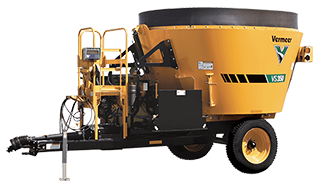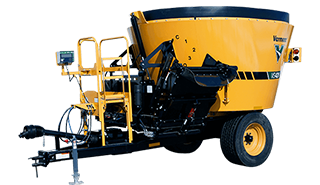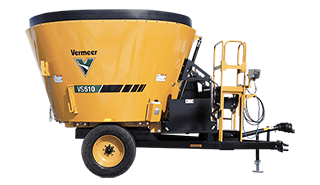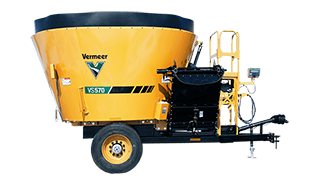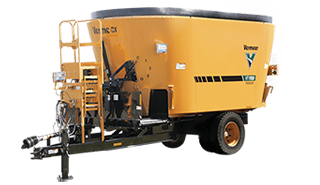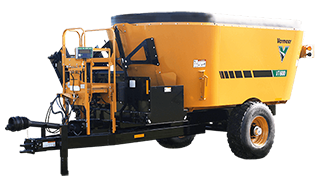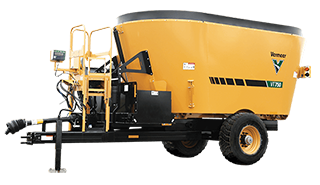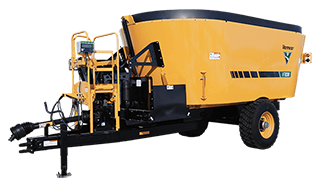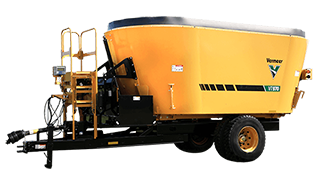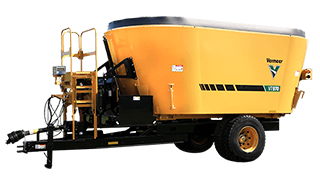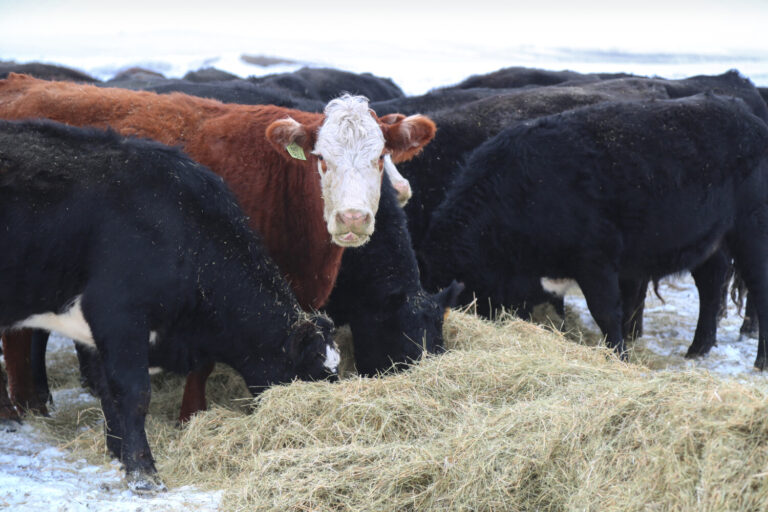
Feed Mixers vs. Hay Bale Processors: Which is Right for you?
December 2023
When it comes to reducing feed waste and enhancing palatability, vertical mixers and bale processors are two popular options on the market today. Determining which piece of equipment makes the most sense for your operation depends on several factors including your goals, herd size and feeding process.
Bart Elder, product manager at Vermeer, said both help decrease feed waste and improving cattle consumption — just in different ways.
Vertical feed mixers
Elder said vertical feed mixers are gaining popularity because producers see the cost of hay increasing annually. With that in mind, the traditional method of throwing out a bale of hay to cattle isn’t always an economical solution.
“Producers have several different sources of feed like dry hay, corn stalks, corn silage, distillers grain, and rye,” he explained. “How do we get that all mixed together? A vertical mixer is a great option to produce a quality, low-cost ration for those cows.”
Elder said a cow-calf operation has the most to gain with a vertical feed mixer. Not only can they use a variety of feedstuffs, but they can also control how much they’re feeding per day to avoid overconsumption.
If a vertical mixer seems like a good option for your feeding program, keep in mind there are several mixers on the market. Elder said to ask yourself some questions when deciding which feed mixer to add to your farm.
- How many loads per day are being fed?
- What is the bale size if you plan to process the bale?
- Where are you feeding, and what tires are necessary for that environment?
In addition to those answers, Elder said seeking out a heavy-duty mixer should be top-of-mind as longevity and cost of ownership is important for every part of livestock production.
“The Vermeer mixer is really a heavy-built mixer,” he said. “Our screw and tub are designed for improved mixing and cleanout. We also have overlapping screws when you get into the twin vertical mixers, and they really benefit the customer as far as a better mix and a faster clean out.”
Vermeer offers a left- or right-hand discharge and different lengths of extensions to accommodate bunk heights and alleys. In addition, all mixers have a four-point scale system for accuracy.
“We don’t just build a one-size-fits-all all for every operation,” he said.
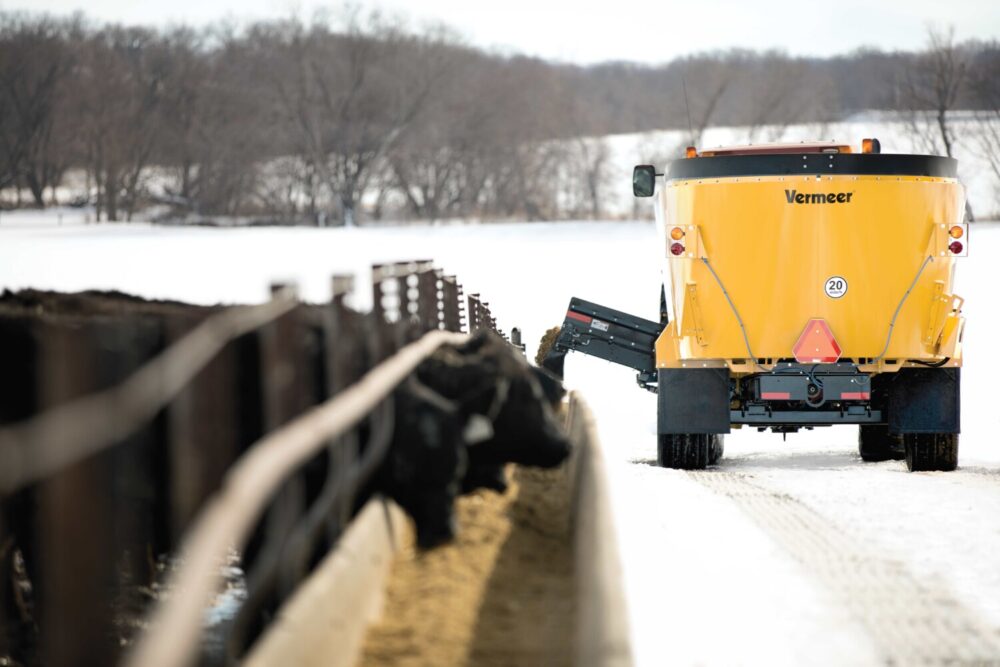
Bale processors
The bale processor is another equipment option to help producers avoid feed waste. For a producer only interested in feeding hay, a bale processor is a great way to extend their hay supply and deliver it in a variety of places on the farm.
“It’s actually going to remove some of the dirt and potential molds that are in the hay,” Elder said. “We’re taking the length of that material that might be an 8- to 12-in length down to a 5- to 7-in length that a cow can more easily consume.”
In other words, the hay bale processor allows producers to do more with less. Some producers have even used the bale processors exclusively for higher-quality bedding. In colder regions, the dual-purpose bonus has the potential to increase performance and health in calves.
One such producer is Kevin Bennett in southwest Wisconsin at SandRock Ranch Herefords. He said spreading crops out when feeding in the pasture can help reduce crowding. This, along with bedding, encourages a cleaner environment.
“Cleaner cattle can lead to less sickness for the calves, as they are not having to nurse off their mothers with mud and manure covering their udders,” he explained.
According to producers like Bennett, using this equipment can save up to 20% of hay versus using only a hay ring. Plus, the bale processor is a very simple, yet versatile, piece of equipment designed for convenience and durability.
“We use a chain bed to drive the bale rotation … our bale contact is much better, and we can feed those oddly shaped bales, too,” Elder said. “We have the ability for net removal since many customers want to leave that net on.”
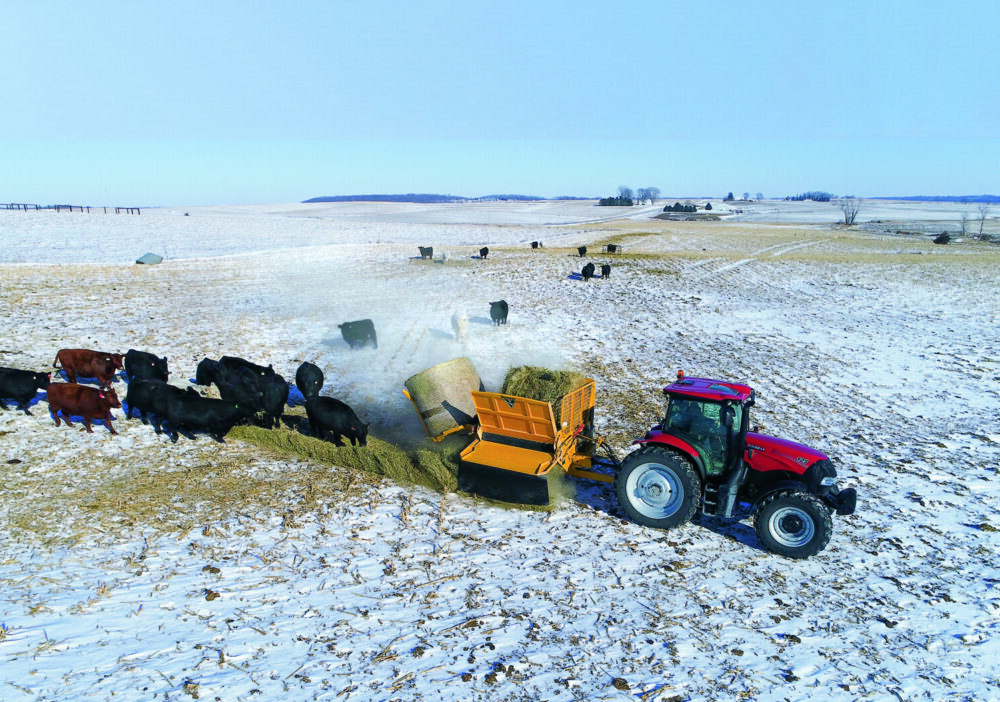
Working together
In some cases, Elder said a producer will use a bale processor before a vertical mixer to decrease mixing time and increase convenience.
In this scenario, a producer will break up the bale structure with the processor and blow the processed hay somewhere that’s easy to scoop up at feeding time. Ideally, they will process enough hay for up to a week’s worth of rations.
Breaking down a whole round bale in a vertical mixer can take between five and ten minutes. If a producer has already processed enough hay, they can save that time. They can add it to the mixer and continue to load other feedstuffs while the mixer does the final processing on the hay.
Having both pieces of equipment also saves some wear and tear on tractors — and offers the added benefit of dispersing bedding. This is especially useful for larger operations. The bale processor can be used exclusively for bedding, while the vertical mixer is used to feed their ration.
Regardless of the equipment you select for your operation, Elder said the Vermeer team has strived since the beginning to offer reliable hay tools.
“We know our producers can’t take a day off, cows have to be fed every day,” he said. “We know the demands of livestock producers and our dealers are prepared to handle those challenges with the products or the parts support that they have.”
To learn more about Vermeer vertical mixers and bale processors, contact your local Vermeer dealer today.


